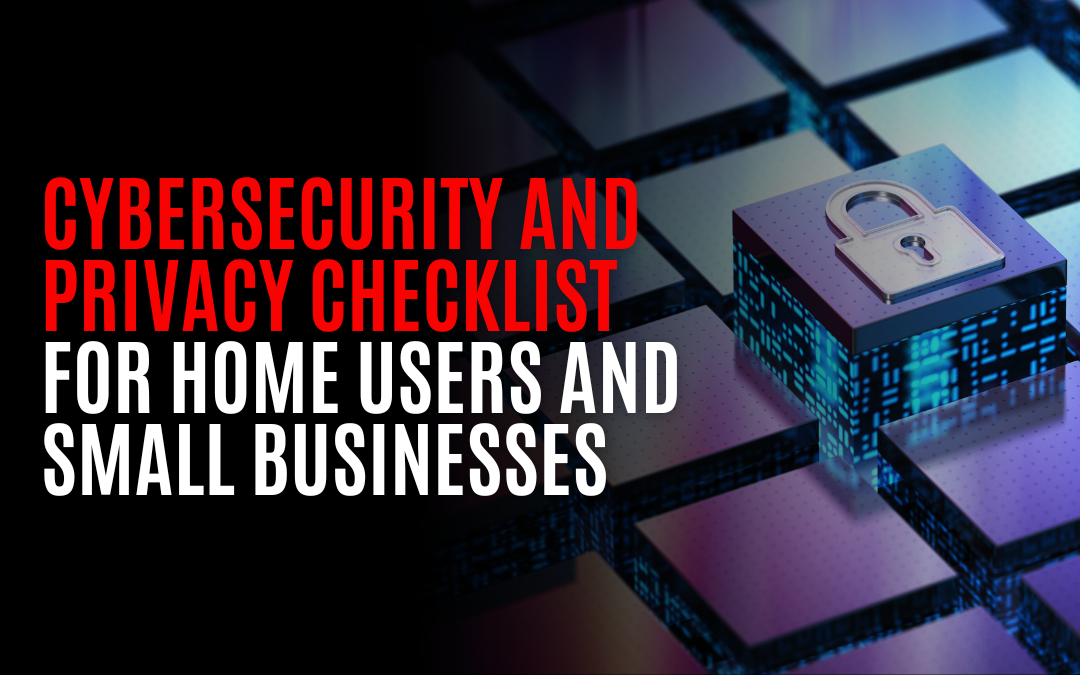Batteries in your fire alarms aren’t the only things you should do when the clocks change. It’s also the perfect time to check into our cybersecurity stance…
🔒 Cybersecurity and Privacy Checklist for Home Users and Small Businesses 🔒
Protecting your digital life is crucial, whether you’re a home user or a small business owner. While you may already have some security measures in place, there are a few things that often get overlooked. Let’s make sure you’re covering the bases in this handy cybersecurity checklist:
- 🌐 Secure your Wi-Fi: Change the default password on your router, use WPA2 encryption, and create a strong network password. This will keep unwanted guests from accessing your network and potentially compromising your data.
- 🔐 Update your devices and software: Regularly update your operating systems, antivirus software, and all other applications running on your devices. These updates often include critical security patches that can prevent hackers from exploiting vulnerabilities.
- 📤 Backup your data: Regularly back up your important files and documents, either to an external hard drive or a secure cloud storage service. This way, if you fall victim to ransomware or hardware failure, you won’t lose everything.
- 🔄 Use strong, unique passwords: Avoid using the same password across multiple accounts. Use a password manager like 1Password to generate strong, unique passwords for each account. Remember, weak passwords are an open invitation to hackers.
- 📧 Enable two-factor authentication (2FA) or multi-factor authentication (MFA): This adds an extra layer of security to your accounts by requiring an additional verification step, such as a fingerprint or a code sent to your phone. Check if your online accounts offer this option and activate it, particularly for sensitive accounts like email and banking. 1password has a built-in 2FA feature.
- 🚫 Be cautious with email and attachments: Be skeptical of emails from unknown senders, especially if they contain attachments or ask for personal information. Phishing attacks are common, and hackers are clever at hiding their deception. When in doubt, don’t click or download anything.
- 🔎 Watch out for suspicious websites: Always look for the padlock icon 🔒 in your browser’s address bar when visiting websites, particularly when entering sensitive information. Stick to reputable sites and avoid clicking on unfamiliar links or ads that seem too good to be true.
- 🚫 Avoid using public Wi-Fi for sensitive activities: Public Wi-Fi networks can be a hotbed for hackers. Don’t access your online banking or enter sensitive information when connected to public Wi-Fi. If you must, use a virtual private network (VPN) to encrypt your connection and protect your data, but don’t trust cheap VPN services.
- 🧹 Keep your digital footprint in check: Regularly review your online presence, such as social media profiles, and limit the personal information you share publicly. The less information available to potential hackers, the better.
- 👀 Monitor your financial and online accounts: Regularly review your financial statements, credit reports, and online accounts for suspicious activity. If you notice anything unusual, immediately secure your accounts and report any fraudulent activity.
These might sound high-tech, but trust me, and soon they’ll become standard fare—the no-brainer tools everyone will incorporate into their security strategy—for a good reason, too!
An extra tip? Consider using OpenDNS or Cisco Umbrella – fantastic against ransomware—which, by the way—is that nasty virus holding data hostage until a ransom is paid (yep- sounds straight out of a movie!) Let me know if you’d like me to have a Zoom call reviewing how to use them. 👊💻
And let’s not forget good ol’ 1Password. It makes coming up with (and remembering!) super strong, unhackable passwords as easy as pie—it’s my go-to, so it should be yours!
In the meantime, stay vigilant and check your devices like your doors before bed! Cause remember, folks, safety doesn’t happen by accident.
Make sense?
P.S. Check Duo.com for more secure forms of two-factor verification; it is infinitely safer than a text message any day.
When it comes to cybersecurity, safety first friends.


